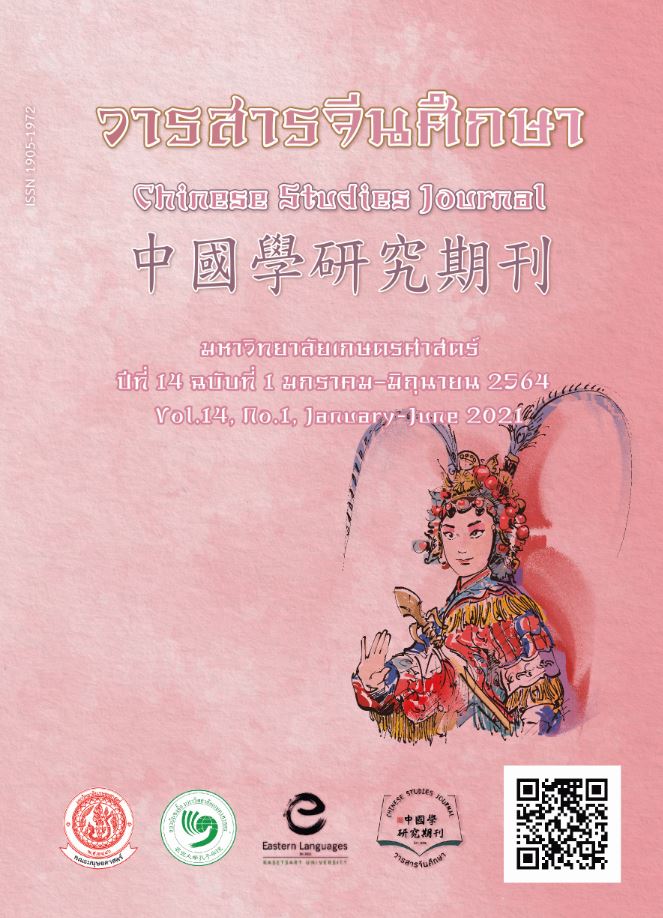To Analysis the Causes of Juvenile Crime In The Gone Child of Zi Jinchen
Main Article Content
Abstract
The Gone Child was one of the socialist detective novel which completed by Zijin Chen in 2013 and published by Hunan Literature & Art Publishing House Co., Ltd. in 2014. The novel tells the story of three children who accidentally photographed an accident which is Zhang Dongsheng’s parents-in-law fell off a cliff while playing, but it is Zhang Dongsheng’s deliberate murder in fact. Then a series of stories staggered by various characters in the book. This research used literature survey method, historical research method, etc. to obtain relevant data and information, read and analyze the causes of juvenile crimes in the novel, and then used literature analysis method to comb and integrate the collected literature data. Firstly, to sort out the characteristics of the three teenager protagonists in The Gone Child—Zhu Chaoyang, Ding Hao (Haozi), and Xia Yuepu (Pupu), as well as their criminal process and criminal psychology which are described by the author Zijin Chen. And then further analyzed the causes of the crimes in family, society and education of them which is also shown the important influence of these aspects by the author. Finally analyzed and summarized the author’s hopes, how to create a better teenager growth environment, so as to prevent and reduce juvenile crime, promote the harmonious development of family, school and society, and also put forward some effective measures to reduce and prevent juvenile crimes.
Article Details
ผลงานทางวิชาการที่ลงตีพิมพ์ในวารสารจีนศึกษา มหาวิทยาลัยเกษตรศาสตร์ เป็นลิขสิทธิ์ของผู้เขียนหรือผู้แปลผลงานนั้น หากนำลงในวารสารจีนศึกษาเป็นครั้งแรก เจ้าของผลงานสามารถนำไปตีพิมพ์ซ้ำในวารสารหรือหนังสืออื่นได้โดยมิต้องแจ้งให้ทราบล่วงหน้า แต่หากผลงานที่ได้รับพิจารณานำลงในวารสารจีนศึกษา เป็นผลงานที่เคยตีพิมพ์ที่อื่นมาก่อนเจ้าของผลงานต้องจัดการเรื่องปัญหาลิขสิทธิ์กับแหล่งพิมพ์แรกเอง หากเกิดปัญหาทางกฎหมาย ถือว่าไม่อยู่ในความรับผิดชอบของวารสารจีนศึกษา มหาวิทยาลัยเกษตรศาสตร์ ทั้งนี้ ความคิดเห็นต่างๆ ในบทความเป็นความคิดเห็นส่วนตัวของผู้เขียน ไม่เกี่ยวกับกองบรรณาธิการวารสารจีนศึกษา มหาวิทยาลัยเกษตรศาสตร์
References
Achenbach, T. M., & Edelbrock, C. S. 1981. Behavioral problems and competencies reported by parents of normal and disturbed children aged four through sixteen. Monographs of the Society for Research in Child Development, 46, 1-82.
Eccles, J. S., Midgely, C., Wigfield, A., Buchanan, C. M., Reuman, D., Flanagan, C., & Maclver, D.1993. Development during adolescence: The impact of stage-environment fit on young adolescents’ experiences in schools and in families. American Psychologist, 48, 90-101.
Hall, G. S.1924.Adolescence: Its psychology and its relations to physiology, anthropology, sociology, sex, crime, religion and education. New York: D. Appleton and Company.
Mead, M. 1928. Coming of age in Samoa – A psychological study of primitive youth for western civilization. New York: New American Library.
Susan Forward, Craig Buck.2002.Toxic Parents: Overcoming Their Hurtful Legacy and Reclaiming Your Life. New York: Bantam Books.
恩里科·菲利.2017.犯罪社会学.郭建安(译).北京:商务印书馆. 封文慧.2020.在模仿与创造之间 ——浅析紫金陈《坏小孩》中儿童 形象的塑造.北京:文学评论.
黄泳翀.2020.新时期青少年犯罪的剖析与预防策略.山西:法制经纬-法制 博览.
黎庶.2020.《隐秘的角落》:“坏小孩”根坏在大人.北京:平安校园.
李婷婷.2020.隐秘的角落:面具下的异化人生.甘肃:社科纵横.
廖瑜.2020.“坏小孩”会把小孩教坏吗?.北京:人民日报社《环球时报》 2020 年7 月17 日第 015 版.
林秀.2020.《隐秘的角落》:恶的诞生与压抑.北京:艺术评论.
乔晓永.2020.浅析预防青少年违法犯罪的有效路径构建.云南:法制与社会.
王斌.2020.让爱的阳光照进“隐秘的角落”——以《隐秘的角落》中朱朝阳 为例谈离异家庭儿童心理建设. 中小学心理健康教育.
王君校.2011.中华现代汉语词典. 北京:华语教学出版社.
谢珍晶.2020.人性的善与恶 ———论电视剧《隐秘的角落》对小说《坏 小孩》的改编.湖北:湖北工业职业技术学院学报.
张知依.作家紫金陈在《隐秘的角落》里书写:坏小孩,其实都不坏.北京:北京纪事.
《中华人民共和国未成年人保护法》1991年9月4日第七届全国人民代表大会常务委员会第二十一次会议通过 2006年12月29日第十届全国人民代表大会常务委员会第二十五次会议第一次修订 根据2012年10月26日第十一届全国人民代表大会常务委员会第二十九次会议《关于修改〈中华人民共和国未成年人保护法〉的决定》修正 2020年10月17日第十三届全国人民代表大会常务委员会第二十二次会议第二次修订.
紫金陈.2014.坏小孩.湖南:湖南文艺出版社.
国家统计局报告:中国未成年人犯罪比重持续降低, https://www.chinanews.com/gn/2019/12-06/9026887.shtml 来源:
中国新闻网, 2019年12月06日 15:42
中国教育概况——2019年全国教育事业发展情况, http://www.moe.gov.cn/jyb_sjzl/s5990/202008/t20200831_48369 7.html 2020-08-31来源:教育部.
《隐秘的角落》豆瓣评分https://movie.douban.com/subject/33404425//


